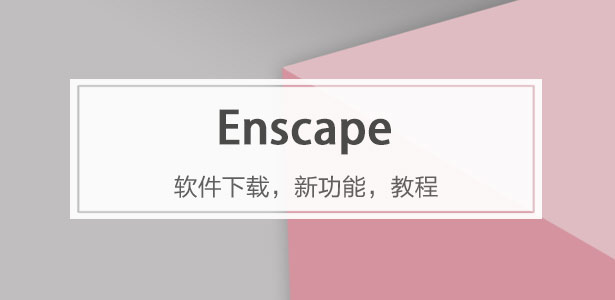
下載app免費領(lǐng)取會員




設(shè)計單位? 如室建筑設(shè)計事務(wù)所
項目地點? 廣東深圳
建成時間? 2025年
項目規(guī)模? 224平方米
本文文字由設(shè)計單位提供。
“在以往所有的文明中,能夠在一代代人之后存下來的是物,是經(jīng)久不衰的建筑物。而今天,看到物的生產(chǎn)、完善和消亡的卻是我們自己。后物質(zhì)時代,人們的生活開始走向情感與精神世界。”
"In past civilizations, what endured across generations were objects – timeless buildings. Today, we witness the production, refinement, and demise of objects. In the post-material world, life increasingly focuses on emotion and spirit."
——讓·鮑德里亞《消費社會》

“福順小館”位于有著獨特文藝氣場和松弛氣質(zhì)的蛇口G&G,是一個約300平方米的低成本舊改加臨建項目,我們試圖在保留工業(yè)記憶與激活社區(qū)活力之間找到平衡,完成一場關(guān)于新舊對話、在地建構(gòu)與空間體驗的實驗。
Located in Shekou’s G&G – an area with distinctive artistic and relaxed character – Fushun Bistro is a low-cost renovation and temporary construction project covering approximately 300 sqm. It balances industrial memory preservation with community activation, serving as an experiment in old-new dialogue, local construction, and spatial experience.

一、場域精神
從“Grass and Glass”到“煙火與建構(gòu)”
G&G創(chuàng)意社區(qū)的前身——南星玻璃加工廠,承載著蛇口工業(yè)時代的集體記憶。以“Grass and Glass”(芒草與玻璃)為靈感錨點,將“草根精神”與“工業(yè)遺存”的張力轉(zhuǎn)化為空間敘事的主線。
G&G Creative Community occupies the former Nanshan Glass Factory, embodying Shekou’s industrial heritage. Using "Grass and Glass" as a conceptual anchor, the design transforms the tension between "grassroots spirit" and "industrial remnants" into its spatial narrative.?

舊建筑的外立面被完整保留僅做局部結(jié)構(gòu)修補,甚至包括上面的斑駁和涂鴉印記。兩座新舊建筑之間,一條刻意保留的狹窄樓梯成為空間敘事的核心——通過向上收窄的尺度與頂部天光引導,構(gòu)建出從工業(yè)廢墟到煙火社區(qū)的蛻變路徑。
The original facade was preserved with minimal structural repairs, retaining its patina and graffiti. A deliberately kept narrow staircase between old and new structures forms the narrative core – its tapering form and skylight guide visitors from industrial ruins to vibrant community space.


行走其間,溫潤的老木扶手、從螺紋鋼立柱滲入的碎片化街景,以及盡頭隱約傳來的餐具碰撞聲,共同編織出漸進式的空間韻律。
Aged wooden handrails, fragmented street views through steel columns, and distant tableware sounds create progressive spatial rhythm.?

新體量的輕盈介入:右側(cè)加建的玻璃房子以黑色鐵藝框架與波紋鋁板屋頂勾勒出輕盈輪廓,以現(xiàn)代材料重新詮釋傳統(tǒng)坡屋頂形制。波紋鋁板的工業(yè)感與老瓦片壁燈的溫潤形成對話,玻璃立面的通透性則消解了新舊體量以及園區(qū)的邊界,讓建筑成為連接歷史與當下的媒介。?
The new glass volume on the right features a black steel frame and corrugated aluminum roof, reinterpreting traditional sloped roofs with modern materials. Industrial aluminum panels contrast with warm tile wall lamps, while transparent glass dissolves boundaries between old/new structures and the surroundings.?




二、空間敘事
框景與煙火劇場
福順小館的改造拒絕“博物館式”的懷舊,轉(zhuǎn)而通過空間操作構(gòu)建動態(tài)的生活劇幕。以“窗”為媒介,將城市景觀、自然綠意與人間煙火編織成一張立體敘事網(wǎng)。?
Rejecting "museum-like nostalgia," the renovation creates dynamic living scenes through window design.?




舊建筑二層的窗景一開始便吸引了我們,在充分考察周邊環(huán)境的互文關(guān)系后,通過微調(diào)窗戶的位置和尺寸,以及在可借景處克制的增加了幾處窗口(從造價和結(jié)構(gòu)兩方面精確衡量)。
The view from the windows on the second floor of the old building immediately captured our attention. After thoroughly examining the dialectical relationship with the surrounding environment, we fine-tuned the positioning and dimensions of the windows, while cautiously adding a few openings at strategic viewpoints—with precise consideration given to both construction costs and structural integrity.


轉(zhuǎn)角懸窗:二樓轉(zhuǎn)角處的方窗將行道樹的枝葉框入室內(nèi),隨四季更迭的動態(tài)畫幅模糊了建筑與自然的界限。?
Corner Window: Frames street tree branches, blurring architecture-nature boundaries across seasons.?

坡頂天窗:傾斜坡屋頂上的圓形天窗,將深圳多變的云影引入空間,暗合中式園林“借景”的智慧。?
Skylight: Circular opening introduces Shenzhen’s changing cloudscapes, echoing Chinese garden "borrowed scenery" principles.?




橫向長窗:打開舊建筑正立面,制造如同電影寬銀幕的水平長窗,將街巷的市井百態(tài)轉(zhuǎn)化為就餐者的“背景動畫”,形成內(nèi)外互動的戲劇性。
Horizontal Window:Widescreen-like frame turns street activity into diners’ "background animation," enabling inside-outside interaction.?


三、在地建構(gòu)
材料的記憶與重生
項目以“低技高感知”的材料策略,將廢棄物料轉(zhuǎn)化為建構(gòu)詩篇。?
A "low-tech, high-sensory" material strategy transforms waste into architecture:?
老木頭的溫度:從山東回收的老榆木成為墻面覆層、餐桌臺面與樓梯踏板。木材的裂痕與蟲蛀痕跡被刻意保留,與波紋鋁板、玻璃形成粗糲與精致的對話。
Reclaimed Elm Wood: Used for walls, tables, and stairs, with cracks and wormholes preserved to contrast with aluminum/glass.?

波紋鋁板的工業(yè)敘事:屋頂與局部立面采用的銀色波紋鋁板,既呼應(yīng)原玻璃廠的金屬記憶,又以當代語匯重構(gòu)傳統(tǒng)瓦屋面肌理。陽光照射下,鋁板產(chǎn)生的漫反射與玻璃房子的透明性形成虛實交響。?
Corrugated Aluminum:References the glass factory’s metal heritage while reimagining traditional roofing. Sunlight diffusion creates interplay with transparent glass.?

鐵藝與瓦片的轉(zhuǎn)譯:黑色做舊鐵藝框架以極簡線條勾勒傳統(tǒng)窗欞意象,而嵌入墻體的老瓦片壁燈則如同從廢墟中生長的光之雕塑,既延續(xù)了工業(yè)記憶,又賦予空間質(zhì)樸的溫度。
Steel and Tile Elements:Blackened steel frames suggest traditional windows; embedded tile lamps serve as "light sculptures" preserving industrial memory.

四、新舊共生
一場未完成的城市實驗
福順小館的改造拒絕“完美”的完成態(tài)。設(shè)計師有意保留施工過程中的偶然性痕跡:混凝土修補的色差、新舊墻體交接處的未封閉縫隙、洗手間外一顆歪脖子樹被小心又隨意的保留......這些“不完美”成為空間真實性的注腳,暗示著建筑始終處于動態(tài)演變的進程中。?
The design intentionally retains construction traces: color variations in concrete repairs, unsealed wall junctions, and a preserved slanted tree near restrooms. These "imperfections" reflect ongoing spatial evolution.?


更值得玩味的是,項目通過空間開放性激活社區(qū)參與:長窗外的行人成為就餐者眼中的風景,而餐廳內(nèi)的燈火與人影亦成為街巷的夜間劇場。這種雙向滲透的設(shè)計,讓建筑成為社區(qū)生活的“催化劑”。?
Spatial openness enables community engagement: passersby become part of the dining experience, while restaurant activity contributes to street life after dark.?

結(jié)語
廢墟之上,煙火生長
在“爆改”盛行的時代,福順小館提供了一種更具反思性的舊改范式:它不以顛覆歷史為代價,也不陷入符號化的懷舊敘事,而是通過理性精準的空間操作,讓新舊材料、記憶與功能在碰撞中產(chǎn)生化學反應(yīng),最終呈現(xiàn)出一種接地氣的松弛。
Amidst trendy "extreme makeovers," Fushun Bistro offers a thoughtful renovation model. Through precise spatial interventions, it sparks dialogue between materials, memory, and function – creating grounded authenticity.


在這里,工業(yè)遺產(chǎn)不再是需要被瞻仰的標本,而是化作滋養(yǎng)日常生活的土壤——正如G&G社區(qū)的名字所隱喻的,芒草(Grass)在玻璃(Glass)廢墟中自由生長,而建筑,終將回歸服務(wù)于人的本質(zhì)。
Industrial heritage becomes daily-life infrastructure, like grass (Grass) growing through glass (Glass) ruins, returning architecture to human-centered purpose.?
技術(shù)圖紙 ▽


完整項目信息
項目名稱:福順小館
項目類型:建筑
項目地點:廣東深圳
建成狀態(tài):建成
設(shè)計時間:2024.07-2024.09
建設(shè)時間:2024.10-2025.01
用地面積:154平方米
建筑面積:224平方米
設(shè)計單位:如室建筑設(shè)計事務(wù)所 Ruhaus Studio
主創(chuàng)建筑師:王藝儒
設(shè)計團隊完整名單:
李安、朱丹丹、黃駿科、彭小健、趙玉立、
照明:張漢華
施工:黃澤寬
業(yè)主:福順小館
攝影師:呂曉斌
本文文字及部分圖片由如室建筑設(shè)計事務(wù)所授權(quán)有方發(fā)布。歡迎轉(zhuǎn)發(fā),禁止以有方編輯版本轉(zhuǎn)載
本文版權(quán)歸腿腿教學網(wǎng)及原創(chuàng)作者所有,未經(jīng)授權(quán),謝絕轉(zhuǎn)載。

上一篇:政策新聞 | 懷化市城鄉(xiāng)建設(shè)檔案館:13萬卷檔案見證城市變遷
下一篇:行業(yè)新聞 | 山西晉城市住建局召開綠色建筑高質(zhì)量發(fā)展技術(shù)交流會






推薦專題
- 建筑賞析|建筑煥新生,城市換新顏:Arcadis凱諦思開拓存量時代新機遇
- 建筑賞析|當“故事里”的家變成現(xiàn)實,就像是九樓之上的飛升童話——Starck打造的19世紀宅...
- BIM建筑|扎哈事務(wù)所+COX設(shè)計:西悉尼國際機場,建設(shè)完工
- 建筑賞析|武漢新地標——武漢西北湖國金中心
- BIM建筑|土上工作室新作:生土建筑與文化(西安)研究中心,坦誠表現(xiàn)材料與建造
- BIM建筑|清華院新作:定州文體中心
- BIM建筑|如恩新作:賦予表情,大連“引庭”文化創(chuàng)意園區(qū)
- BIM建筑|如室建筑新作:福順小館
- 建筑賞析|嘉定遠香湖中央活力區(qū)商辦景觀
- BIM建筑|Aedas方案:深圳筍崗鐵路客整所上蓋項目城市設(shè)計,公共空間和文化商業(yè)組團



































